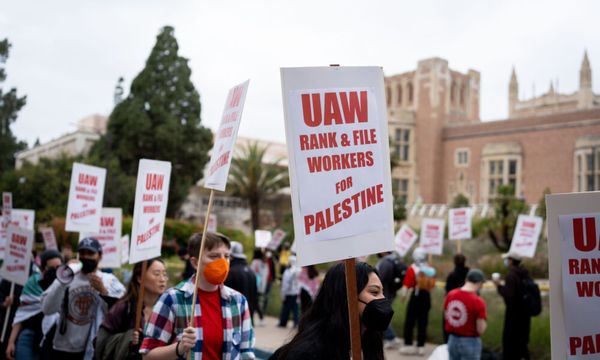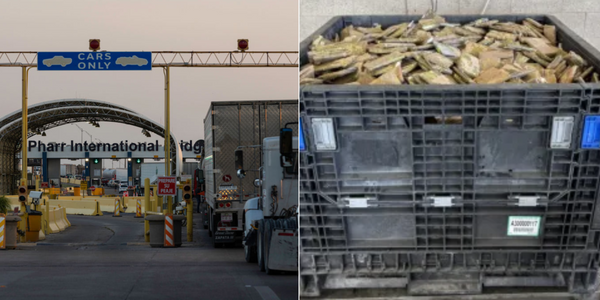Across the Tasman, New Zealanders who were once asked to lock down over a single case of COVID-19 are now being urged to wear masks as the country records a seven-day rolling average of nearly 10,000 cases a day.
Authorities believe there is widespread community infection in every region of New Zealand, driven by the highly transmissible Omicron BA.5 sub-variant.
And for a nation of just 5.1 million people, attention is now turning to New Zealand's daily death rate, which has been among the highest in the world according to one World Health Organization measure.
Health authorities have refused to move back towards settings that would limit the size of gatherings, instead insisting that a three-pronged strategy of masks, vaccines and isolation will get the population through winter.
With its borders now open and strict lockdowns a thing of the past, New Zealand is now riding the waves of COVID-19 as they crash across the world.
'Not sure where current wave is going'
Professor of Public Health at the University of Otago and expert epidemiologist Michael Baker said New Zealand's daily death rate was now "very concerning".
"I think one of the things that's alarming … is the high mortality," said Professor Michael Baker.
"It's now peaking at the highest level we've ever seen, [with] a moving average of about 22 deaths a day. That's in a population of 5.1 million. So that's quite concerning."
On the World Health Organization's ranking of daily new confirmed COVID-19 deaths per million people, New Zealand has been among the worst-performing nations this week.
New Zealand has announced a change in how it will report its COVID-19-related deaths, moving to a model where cases are only counted in mortality figures when the disease has been the direct reason for the loss of life.
The new reporting system comes into effect today and public health official Dr Andrew Old said it would more accurately reflect the contribution of COVID-19 to deaths in New Zealand.
"Whether we're counting deaths from or with COVID-19, New Zealand has a lower cumulative COVID-19 mortality rate than many other countries due to our successes early on in the pandemic," Dr Old told a media briefing on Tuesday.
On Thursday, New Zealand reported 32 COVID-19-related deaths.
New Zealand experienced a peak in daily new COVID cases during its first Omicron wave in March, but deaths, as well as hospitalisations, are tracking higher this time around, according to Professor Baker.
"Our modellers are really not sure where this current wave is going," he said.
The current infection control measures in New Zealand are a long way from the strict lockdowns brought in over the past two years.
But the strategy across the Tasman does have some small, yet significant, differences from the patchwork of measures across Australian states and territories.
NZ controls 'tighter than in Australia'
Under current settings, New Zealanders are required to wear masks in a number of indoor spaces, including retail settings such as "supermarkets, shopping malls, pharmacies, petrol stations and takeaway food stores".
New Zealanders also have to wear masks in museums and libraries, on public transport, when using ride-share services and in post offices.
There are some mask mandates in effect in Australian states and territories, but most are limited to hospitals and other healthcare settings, prisons, airports and aged care homes.
Like New Zealand, most public transport users in Australia are also required to wear masks and South Australia has included one retail environment — pharmacies — in its mask mandate.
New Zealand still requires household contacts to isolate for seven days, even if they are not displaying any COVID symptoms, whereas most Australian states and territories have moved to a close contact system that only requires people to isolate if they are symptomatic.
As well as holding onto some mask mandates and isolation rules, New Zealand has also made medical masks and rapid antigen tests free to everyone and made more people eligible for anti-viral medications should they become infected.
New Zealand does not have states and all regions are currently at the same alert level, so everyone is required to follow the same rules.
Dr Baker and Australian epidemiologist Tony Blakely analysed the strategies of both countries and when looking at mask mandates, the availability of RATs, rules around isolation periods, as well as eligibility for anti-viral treatments, New Zealand is doing better, but the experts argued there was still more that both countries could do.
Australians over the age of 30 are able to access their fourth dose of a COVID-19 vaccine should they choose to, something not yet available to the same cohort in New Zealand.
"Overall, the control measures in New Zealand are currently tighter than in Australia," Dr Baker said.
Despite having stronger mask mandates than Australia, there are calls for New Zealand to go further.
Epidemiologist in the Department of Public Health at the University of Otago Amanda Kvalsvig said the need for broader mask use and the "vital protection" that would offer was urgent.
"Masks are a key protection in winter 2022 because they work for any respiratory pathogen, protecting against new COVID-19 variants and more familiar seasonal infections like flu and RSV," she said.
"These outbreaks in combination are proving to be far worse than a normal winter season and we've only just begun to see the long tail of chronic illness and absenteeism that COVID-19 is causing in other countries."
Lack of school mask mandate 'a gap'
Similar to Australia, the use of masks in schools is "the sharp edge of the debate at the moment", according to Dr Baker.
Outgoing Director General of Health Dr Ashley Bloomfield said there was a "very strong recommendation" from the NZ Health Department for schools to adopt widespread mask use among students and staff.
"Our strong advice has been — and masks have been distributed to schools to help support this — is particularly for the first four weeks of this next term … to consider asking all students and staff to use masks," Dr Bloomfield said on Tuesday.
Dr Baker believes the lack of a mask mandate for New Zealand schools is "a gap".
"And one of the reasons schools are so important is that students are generally quite adherent … and also they're great educators.
"So if the kids [are] getting used to wearing masks properly at schools, they can take them home and educate families."
Fatigue a common problem
New Zealand might be living under its COVID-normal setting but at a media briefing on Tuesday, Dr Bloomfield said the country was "not out of the woods yet".
"There is still a global pandemic — it's not just what's happening in NZ, it's what happening globally," he said.
"We are still seeing development of sub-variants and there could come a time when one is more severe.
"We need to keep our wits about us."
For the first two years of the pandemic, New Zealand was heralded around the world for its COVID-19 elimination strategy and for its commitment to public health — closing international borders even to its citizens and enforcing strict lockdowns that went so far as to prohibit food deliveries.
Despite some parts of the community protesting restrictions, there was widespread acceptance that the measures were necessary for the greater good.
In December 2020, Prime Minister Jacinda Ardern was returned to power with a sweeping majority — a result largely seen as a ringing endorsement of her decision to throw up the border controls and protect "fortress New Zealand" from the rest of the world.
Dr Kvalsvig said moving to a strategy that "devolved pandemic control to individuals" was weakening attempts to suppress the Omicron wave.
"That way you have two-way protection: both source control — people aren't breathing virus into shared spaces. And respiratory protection — people aren't breathing in virus from the air around them."
There are also fears fatigue has set in and there is little appetite for going further with mask mandates or limiting gathering numbers.
"Some political parties and … the business sector are saying 'we are over it, we need to move on' [and are] saying 'the rest of the world has moved on', which is not correct of course," Dr Baker said.
"A lot of countries are battling this surge at the moment.
The country operated first under a series of alert levels, but this year moved to a traffic light system where it remains at the orange setting.
There have been some calls to move to red, where New Zealanders would again face limits on the number of people allowed at gatherings.
But Dr Bloomfield and the COVID Response Minister have insisted the current setting is sufficient as limiting gathering numbers would not prevent transmission in the home or workplace.







